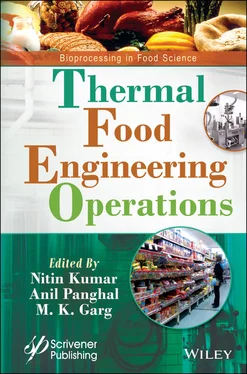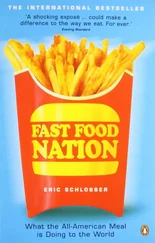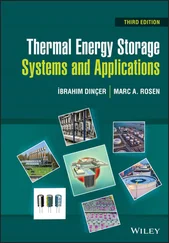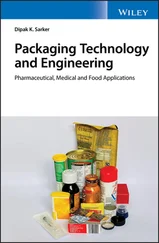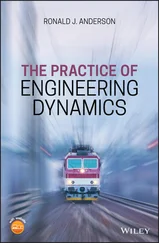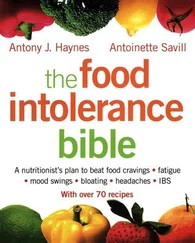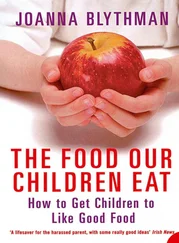NITIN KUMAR - Thermal Food Engineering Operations
Здесь есть возможность читать онлайн «NITIN KUMAR - Thermal Food Engineering Operations» — ознакомительный отрывок электронной книги совершенно бесплатно, а после прочтения отрывка купить полную версию. В некоторых случаях можно слушать аудио, скачать через торрент в формате fb2 и присутствует краткое содержание. Жанр: unrecognised, на английском языке. Описание произведения, (предисловие) а так же отзывы посетителей доступны на портале библиотеки ЛибКат.
- Название:Thermal Food Engineering Operations
- Автор:
- Жанр:
- Год:неизвестен
- ISBN:нет данных
- Рейтинг книги:5 / 5. Голосов: 1
-
Избранное:Добавить в избранное
- Отзывы:
-
Ваша оценка:
- 100
- 1
- 2
- 3
- 4
- 5
Thermal Food Engineering Operations: краткое содержание, описание и аннотация
Предлагаем к чтению аннотацию, описание, краткое содержание или предисловие (зависит от того, что написал сам автор книги «Thermal Food Engineering Operations»). Если вы не нашли необходимую информацию о книге — напишите в комментариях, мы постараемся отыскать её.
Presenting cutting-edge information on new and emerging food engineering processes,
, the first volume in the new series, “Bioprocessing in Food Science,” is an essential reference on the modeling, quality, safety, and technologies associated with food processing operations today.
This outstanding new volume:
Audience:
Thermal Food Engineering Operations — читать онлайн ознакомительный отрывок
Ниже представлен текст книги, разбитый по страницам. Система сохранения места последней прочитанной страницы, позволяет с удобством читать онлайн бесплатно книгу «Thermal Food Engineering Operations», без необходимости каждый раз заново искать на чём Вы остановились. Поставьте закладку, и сможете в любой момент перейти на страницу, на которой закончили чтение.
Интервал:
Закладка:
Infrared heating is mainly utilized to modify the eating characteristics of food by varying its color, texture, flavor, and odor. Radiant heat is less managed and has a broader range of frequencies. The thermal conductivity is a limiting factor in infrared heating. It acts as an indirect method of heating. Infrared is simply absorbed and converted into heat. It has limited penetration depth in food. It has several advantages over conventional methods such as decreased heating time, reduce quality loss, and uniform heating, versatility, easy to operate and compact equipment, and many others. It also has a vast area of application includes drying, frying, baking, cooking, freeze-drying, pasteurization, sterilization, blanching, and many others.
The other technique is non-thermal heating technologies which are based on pulsed light, pulsed electric fields, ultrasound, and gamma radiation, and others, where the temperature may change also but is not the prime parameter for food processing. The purpose of this chapter is to deliver a general outlook of novel thermal technologies in the food processing sector along with their environmental impact, current trends, and future perspective.
1.2 Novel Thermal Technologies: Current Status and Trends
The most common approach for food processing in the last 50 years is thermal processing because a huge amount of microorganisms are removed at elevated temperatures by killing them. Thermal processing protects food by pasteurization, hot air drying, and others, induces variations to improve food quality by baking, blanching, roasting, frying, and cooking. Time and temperature used are the key variable depending on the application used. In the case of thermal processing, sometimes the high temperature may lead to loss of nutrients or bioactive compounds which results in low-processed food and low-grade food.
So in such a situation, novel thermal techniques or with the combination of traditional technologies are used to modify the quality and shelf life while decreasing the change in sensory properties. The food industry is continuously developing in order to fulfill customer demand for food nutrition, natural flavors, food quality, and taste. Innovation and research are continuously growing all over the world to maintain and improve standards. Currently, consumers demand food with the least or no chemical additives and should be minimally processed [37]. These developing technologies are called ‘novel’ technologies because they are successfully fulfilling the needs of consumers and are an improvement of conventional technologies. Depending upon the principle used, it can be thermal or non-thermal. Techniques such as microwave, ultrasound, and pulsed electric field can be an alternative proved by many researchers to develop nutritious and safe food [10, 15, 16]. Such techniques are being used broadly by many innovative food companies [6]. As compared to traditional technologies these new emerging technologies have many benefits over traditional techniques such as more heat and mass transfer, improved product quality, short process and residence time, better functionality, enhanced preservation, and others. The processing of the food is important for taste, nutritional content, texture, and appearance [36]. The benefits of novel processing technologies over traditional techniques are improved functional characteristics and retention of sensory attributes by using the promising next-generation food [62]. The development, research, and large-scale set-up of these novel technologies are taking place internationally. It is evident from the number of publications on the benefits of novel thermal technologies in food processing in various food and agriculture processing research journals [51].
Microwave: The most popular and extensive technology studied worldwide both domestically and industrially is microwave processing due to its various advantages such as easy operation, lower maintenance requirement, and cleaner environment [77]. But despite all the advantages, microwave is facing two main hurdles, i.e., irregular distribution of temperature within the food product and high cost of energy regarding this technique [6]. Furthermore, the set-up operated at 2450 MHz may give rise to serious boundary and surface overheating of the food to outstretch the desired elevated temperature in cold spots. For those cases, continuous microwave systems have been used to provide uniform temperatures for the heating of foods. Some authors have suggested fusion with water as the heating medium, pulsed microwave [24, 51]. The most common technology is microwave-assisted thermal sterilization system (MATS™) based on 915MHz single-mode cavities using a shallow bed with water food immersion; it penetrates deeper in food and water offers to reduce the edge heating. It got approval in 2009 by the Food and Drug Administration (FDA) [72].
Infrared heating: Proved by many researchers, Infrared heating (IRH) is an efficient process for the purification of pathogenic microorganisms in food. Many operational variables such as food temperature, size and kind of food materials, IR power intensity, IR power intensity, and others are necessary for microbial inactivation. At a commercial scale, IRH had been found as the replacement or substitute to decrease non-uniform temperature distribution which occurs in microwave heating [6]. Internationally, IRH is used for blanching, drying, baking, roasting, and peeling. At the industrial level IRH has considerable advantages such as a large heat delivery rate, no medium required, high energy efficiency, low environmental footprint, and others [39]. But because of less penetration depth, this technology is not successful at the commercial level; for example, it cannot be utilized in in-packaging food processing. The major successful large-scale (commercial) applications of IRH is drying of low-moisture foods (grains, pasta, tea, etc.), also the applications in baking (e.g., pizzas, biscuits, and others) and in the oven for roasting of cereals, coffee, etc.
Radiofrequency: Another thermal technology is Radiofrequency heating (RFH), used from the 1940s. Earlier applications were to warm bread, dry up and blanch vegetables and others. RFH has a greater industrial interest because of its unique properties such as deeper penetration due to its lesser frequencies, uniform electric field distribution, and longer wavelength. Major applications are in the food-drying sectors for pasta, snacks, and crackers and sterilization or pasteurization process, treatment of seeds and disinfection of product [19]. As compared to microwave heating, RF has the potential to reduce surface overheating and can also give better results at a commercial scale [81]. On a commercial scale, such as for treating bulk materials, sterilization of packaged foods is successful because they are simple to construct, have a more uniform heating pattern, and have greater penetration depth. Drawbacks of this technology include, at industrial scale, the design equipment is complicated, there is a high investment cost and technical issues such as dielectric failure and thermal runaway heating that can damage package and product [1]. Another common thermal technique is ohmic heating (OH) where internal heat generation takes place by passing a current into the materials.
Ohmic heating (OH): Compared to other technologies, ohmic heating has advantages such as larger temperature in particles than in liquid, decreased fouling, energy-efficient, uniform heating (achieved by thermal, physical, and rheological properties), and lower cost [64]. The drawbacks include the requirement of aseptic packing after OH heating, the possibility of corrosion, direct exposure of the electrode with food.
Major utilization of OH are blanching, sterilization, evaporation, dehydration, extraction, and evaporation. The basic procedure involved in OH of microbial inactivation is thermal harm and in some cases by electroporation. In comparison to traditional heating, OH heating can attain lesser heating times, can keep away from hot surfaces, and can decrease the temperature gradients.
Читать дальшеИнтервал:
Закладка:
Похожие книги на «Thermal Food Engineering Operations»
Представляем Вашему вниманию похожие книги на «Thermal Food Engineering Operations» списком для выбора. Мы отобрали схожую по названию и смыслу литературу в надежде предоставить читателям больше вариантов отыскать новые, интересные, ещё непрочитанные произведения.
Обсуждение, отзывы о книге «Thermal Food Engineering Operations» и просто собственные мнения читателей. Оставьте ваши комментарии, напишите, что Вы думаете о произведении, его смысле или главных героях. Укажите что конкретно понравилось, а что нет, и почему Вы так считаете.
